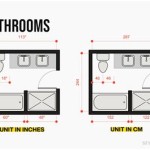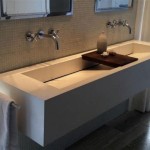How Much Does Remodeling A Small Bathroom Cost?
Remodeling a small bathroom is a common home improvement project, but understanding the associated costs is crucial for effective budgeting and planning. The expenses involved can vary significantly depending on a multitude of factors, ranging from the scope of the remodel to the materials chosen and the geographic location. Accurately estimating the cost requires careful consideration of each component, ensuring that the completed project aligns with both aesthetic preferences and financial constraints.
The total cost of remodeling a small bathroom can range from a few thousand dollars for minor cosmetic updates to upwards of $15,000 or more for a complete overhaul involving structural changes and high-end finishes. This broad range underlines the importance of detailed planning and obtaining multiple quotes from qualified contractors to arrive at a realistic budget.
Factors Influencing the Cost of Bathroom Remodeling
Several key elements directly influence the overall cost of a small bathroom remodel. These factors can be broadly categorized into labor costs, material selections, and the extent of the renovation work.
Labor Costs: Labor constitutes a significant portion of the remodeling budget. This includes the fees for plumbers, electricians, carpenters, tile installers, and general contractors. The rates charged by these professionals vary based on experience, licensing, and the complexity of the tasks involved. Plumbing work, particularly if it involves relocating pipes, can be expensive. Similarly, electrical work, such as installing new outlets or lighting fixtures, necessitates a qualified electrician to ensure compliance with safety codes. General contractors typically oversee the entire project, coordinating different trades and managing the project schedule, which adds to the overall labor costs.
Material Selection: The choices made regarding materials for the bathroom directly impact the overall cost. Fixtures like toilets, sinks, showers, and bathtubs are available in a wide range of prices, from budget-friendly options to luxury models with advanced features. Similarly, tile selection for flooring and walls can significantly affect the budget. Ceramic and porcelain tiles are generally more affordable than natural stone options like marble or granite. Vanities also vary greatly in price, depending on the material, size, and style. Custom-built vanities are typically more expensive than prefabricated options. The selection of accessories such as faucets, showerheads, and lighting fixtures can also influence the final cost.
Scope of Renovation: The extent of the renovation work is a primary driver of the overall cost. A simple cosmetic update, such as painting the walls and replacing the vanity mirror, will be far less expensive than a complete gut remodel involving structural changes like moving walls or relocating plumbing fixtures. Replacing a toilet or sink in the same location is generally less expensive than moving the plumbing lines to accommodate a new layout. Similarly, replacing existing tile is less costly than tearing out old tile and preparing the subfloor for a new installation. The scope of the renovation should be carefully considered to ensure that the budget aligns with the desired outcomes.
Breaking Down the Costs: A Detailed Overview
To gain a more granular understanding of bathroom remodeling costs, it's helpful to examine the individual components and their associated expenses.
Demolition: The initial step in a more extensive remodel often involves demolition of existing structures, such as removing old fixtures, flooring, and wall coverings. Demolition costs can range from $500 to $2,000, depending on the extent of the work and the disposal fees associated with removing debris. Some homeowners opt to handle demolition themselves to save on costs, but it's important to factor in the time and effort involved, as well as the potential for unforeseen issues such as asbestos.
Plumbing: Plumbing work can be a substantial expense, especially if relocating pipes or installing new fixtures. The cost of plumbing can range from $500 to $5,000 or more, depending on the complexity of the job. Installing a new toilet typically costs between $200 and $700, including the cost of the toilet itself and the labor for installation. Installing a new shower or bathtub can range from $500 to $3,000, depending on the type of fixture and the complexity of the plumbing connections.
Electrical: Electrical work is essential for ensuring the safety and functionality of the bathroom. The cost of electrical work can range from $300 to $2,000 or more, depending on the scope of the project. Installing new outlets or switches typically costs between $50 and $200 per outlet or switch. Installing new lighting fixtures can range from $100 to $500 per fixture, depending on the type of fixture and the complexity of the installation. Adding a new circuit for a heated floor or whirlpool tub can be more expensive, requiring additional wiring and a dedicated circuit breaker.
Flooring: Flooring is a significant element in the overall aesthetic and functionality of the bathroom. The cost of flooring can range from $5 to $20 per square foot, depending on the material chosen. Ceramic and porcelain tiles are generally the most affordable options, while natural stone tiles like marble and granite are more expensive. Installation costs can range from $3 to $10 per square foot, depending on the complexity of the installation and the type of tile. Heated flooring adds to the cost, both for the materials (heating elements and thermostat) and the installation labor.
Walls: Wall treatments play a crucial role in the appearance and durability of the bathroom. The cost of wall treatments can range from $2 to $20 per square foot, depending on the material chosen. Painting is the most affordable option, while tiling can be more expensive. Installing drywall typically costs between $1 and $3 per square foot, including the cost of materials and labor. Tiling walls can range from $5 to $15 per square foot, depending on the type of tile and the complexity of the installation.
Fixtures: Bathroom fixtures, such as toilets, sinks, showers, and bathtubs, are essential components of the bathroom. The cost of fixtures can vary greatly depending on the brand, style, and quality. A standard toilet can cost between $100 and $500, while a high-end toilet with advanced features can cost upwards of $1,000. A basic sink can cost between $50 and $300, while a designer sink can cost upwards of $500. A standard shower or bathtub can cost between $300 and $1,000, while a luxury shower or bathtub with jets and other features can cost upwards of $2,000.
Vanity: The bathroom vanity serves as both a functional storage space and a focal point of the room. The cost of a vanity can range from $200 to $2,000 or more, depending on the size, material, and style. A prefabricated vanity is typically more affordable than a custom-built vanity. Installing a vanity can range from $100 to $500, depending on the complexity of the installation and the plumbing connections.
Lighting: Lighting is essential for creating a functional and inviting bathroom. The cost of lighting fixtures can range from $50 to $500 or more per fixture, depending on the style and quality. Installing new lighting fixtures can range from $50 to $200 per fixture, depending on the complexity of the installation and the electrical connections.
Ventilation: Proper ventilation is crucial for preventing moisture build-up and mold growth in the bathroom. Installing a new ventilation fan can cost between $100 and $500, depending on the size and features of the fan. Upgrading an existing fan can be less expensive, while adding a new vent to the exterior of the house can be more costly.
Strategies for Managing Bathroom Remodeling Costs
While remodeling a bathroom can be a significant investment, there are several strategies homeowners can employ to manage costs and stay within budget.
Prioritize Needs vs. Wants: Clearly distinguish between essential upgrades and desired features. Focusing on necessary improvements, such as addressing plumbing issues or replacing a damaged floor, can help allocate the budget effectively. Desired features, such as high-end fixtures or intricate tile work, can be considered if the budget allows, but should not be prioritized over essential needs.
Obtain Multiple Quotes: Soliciting bids from multiple contractors is crucial for ensuring competitive pricing. Aim to gather at least three quotes from reputable contractors in the area. Compare the quotes carefully, paying attention to the scope of work, the materials included, and the estimated timeline. Be wary of quotes that are significantly lower than others, as this may indicate substandard work or hidden costs.
Consider DIY Work: If experienced in home improvement, consider tackling certain aspects of the remodel independently. Tasks such as painting, demolition, or installing simple fixtures can be completed by homeowners to save on labor costs. However, it's crucial to assess skill levels honestly and avoid attempting tasks that require specialized expertise, such as plumbing or electrical work.
Choose Materials Wisely: Selecting materials that balance cost and quality is essential for staying within budget. Explore options such as ceramic or porcelain tiles, which are generally more affordable than natural stone. Consider prefabricated vanities instead of custom-built options. Look for sales and discounts on materials, and compare prices from different suppliers to find the best deals.
Maintain the Existing Layout: Relocating plumbing or electrical fixtures can significantly increase the cost of the remodel. If possible, maintain the existing layout of the bathroom to minimize these expenses. Replacing fixtures in the same location is generally less expensive than moving plumbing lines or electrical wiring.
Plan Ahead and Be Realistic: Careful planning and realistic expectations are crucial for a successful and cost-effective remodel. Develop a detailed budget that includes all anticipated expenses, and factor in a contingency fund for unforeseen issues. Be prepared for potential delays and disruptions, and communicate effectively with the contractor throughout the project.
Consider Financing Options: For larger remodeling projects, consider financing options such as home equity loans or lines of credit. These options can provide access to the funds needed to complete the project, but it's important to compare interest rates and terms carefully to ensure affordability.
By carefully considering these factors and employing effective cost-management strategies, homeowners can successfully remodel their small bathrooms without exceeding their budgets.

Understanding Small Bathroom Remodel Costs And How To Save

Small Bathroom Remodel 2024 Cost Guide Modernize

Understanding Small Bathroom Remodel Costs And How To Save

How Much Does A Bathroom Remodel Cost 2024 Data Angi

Bathroom Remodeling Costs In Dc 2024 Sweeten

2024 Small Bathroom Remodel Cost Guide Angi

Bathroom Remodeling Costs 2024 Sweeten

How Much Does It Cost To Remodel A 5x7 Bathroom 136 Home

A Guide To Budgeting For Your Bathroom Remodeling Hdr

Bathroom Remodeling Costs In New Jersey 2024 Sweeten Com
Related Posts







